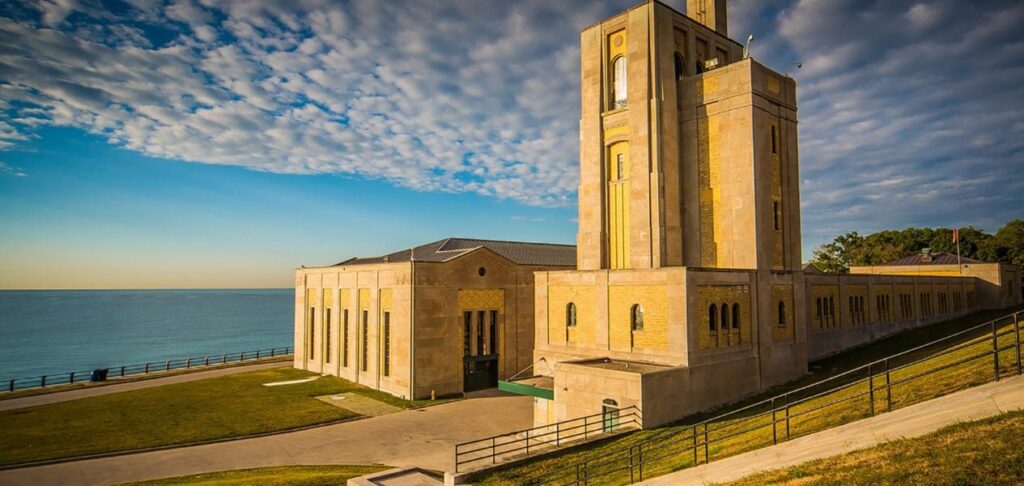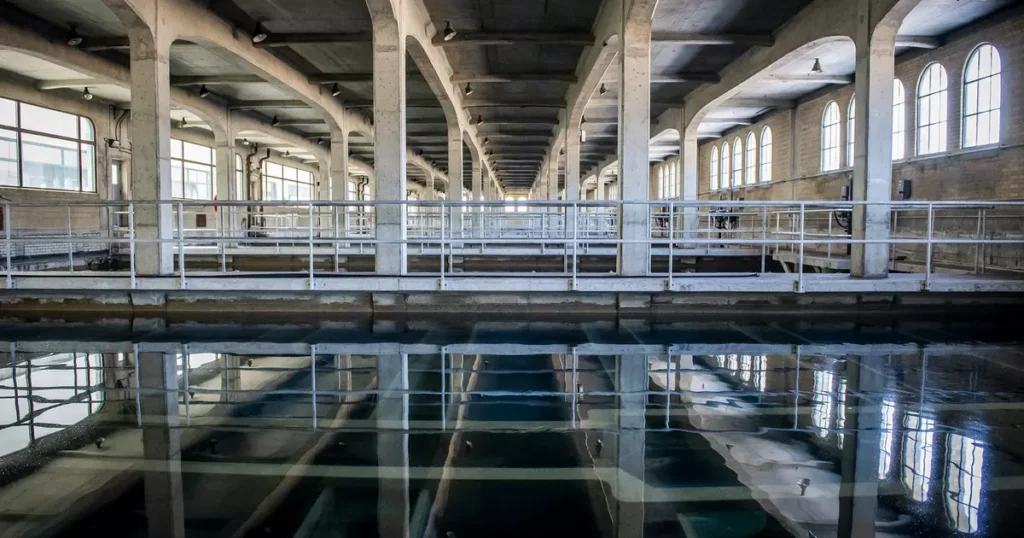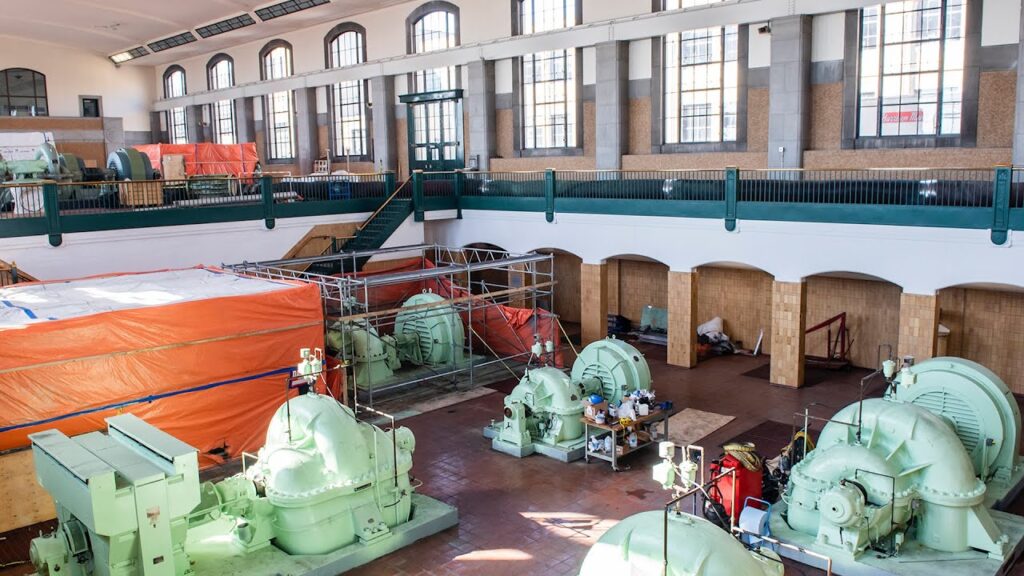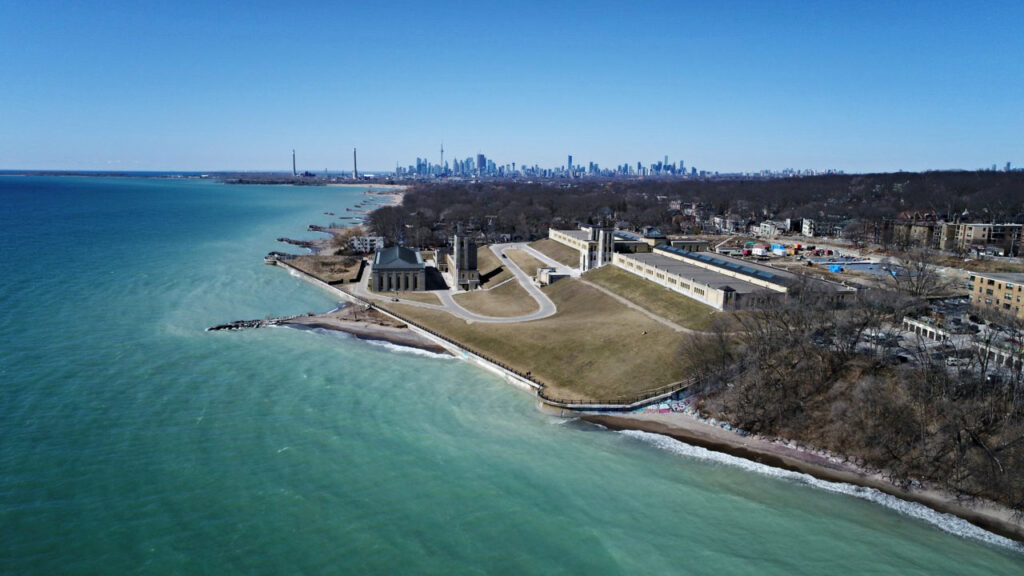The Harris Water Treatment Plant in Scarborough is a vital part of Toronto’s water system. As one of the biggest water plants in the city, it provides clean drinking water to millions of people every day. It is not only a working facility but also a famous building because of its beautiful art-deco design. This place stands as proof of the city’s forward-thinking approach to public utilities. In this article, we’ll explore its history, importance, and unique features.
Location and Address of the RC Harris Water Treatment Plant
Located at 2701 Queen St E, Scarborough, the RC Harris Water Treatment Plant stands majestically along the shores of Lake Ontario. Its prime location allows it to draw water directly from the lake, making it the perfect spot for purifying and distributing water throughout Toronto.
Scarborough, known for its rich history and beautiful waterfront, hosts this very important infrastructure. For those looking to visit, the plant is easily accessible via public transit or by car, and while parking is available, it may be limited during public tours or events. Visitors often come to see not only the facility but also the surrounding Bluffers Park, making it a popular destination for those interested in both nature and engineering.
The Harris Water Treatment Plant Scarborough address puts it within a short drive from downtown Toronto, making it convenient for tours, educational visits, and sightseers wanting to explore one of the city’s most important landmarks.

History and Significance
The RC Harris Water Treatment Plant was completed in 1941, a time when Toronto’s population was rapidly expanding. It was designed to meet the growing city’s need for clean drinking water and was named after Roland Caldwell Harris, who served as Toronto’s Public Works Commissioner. Harris was influential in pushing for modern infrastructure in the city, and the plant is often referred to as his crowning achievement.
Built in the art-deco style, the plant is as much a piece of art as it is a utility. Its intricate stonework, arches, and overall design have earned it the nickname “The Palace of Purification.” While other water treatment plants focus solely on function, the RC Harris Water Treatment Plant combines both form and function, making it one of the most visually stunning utility buildings in North America.
Beyond its architectural beauty, the plant plays a significant role in Toronto’s water system, providing nearly 30% of the city’s drinking water. Its central role has made it a key part of the city’s infrastructure for decades.
The Plant’s Impact on Public Health
When the plant was built, access to clean water was a pressing public health concern. Diseases like cholera and dysentery were common in many urban areas, and waterborne illnesses posed a constant threat. By ensuring a reliable supply of purified water, the RC Harris plant significantly improved the quality of life for Toronto residents. The impact of the plant extends beyond its capacity, making it one of the city’s most important public health achievements.
How Water Is Treated at the RC Harris Plant
The RC Harris Water Treatment Plant uses a thorough process to treat water, ensuring that Toronto residents receive clean, safe water for drinking, cooking, and cleaning. Let’s walk you through how this process works:
- Water Intake: Water is drawn directly from Lake Ontario, one of the world’s largest freshwater lakes. The plant’s proximity to the lake ensures a steady, abundant supply of water.
- Screening: As water is pumped into the plant, it passes through screens that remove large debris such as sticks, leaves, and other organic materials.
- Filtration: The water is then filtered through sand and charcoal to remove smaller particles. This step is necessary for eliminating microscopic impurities that can affect water quality.
- Chemical Treatment: Once filtered, the water undergoes chlorination and other chemical treatments to kill harmful bacteria, viruses, and other pathogens. This step ensures the water meets health and safety standards.
- Storage and Distribution: After treatment, the clean water is stored in large reservoirs before being distributed to homes and businesses across Toronto. This entire process is constantly monitored to maintain water quality and safety.
The R. C. Harris water treatment plant process is a multi-step approach that combines mechanical filtration and chemical treatments, ensuring that the water is not only clean but also safe to drink by the time it reaches your faucet.

Capacity and Infrastructure
One of the key questions many people ask is, “What is the capacity of the RC Harris Water Treatment Plant?” This state-of-the-art facility can treat up to 950 million liters of water each day. To put that into perspective, that’s enough water to fill about 380 Olympic-sized swimming pools daily.
The plant’s capacity is crucial for a city like Toronto, which has a population of 3 million people. As Toronto continues to grow, the RC Harris Water Treatment Plant remains essential to maintaining a steady supply of clean water. The plant’s ability to meet Toronto’s growing water needs has made it one of the largest and most important water treatment facilities in North America.

Parking and Visitor Information
For those interested in visiting the plant, you’ll be pleased to know that RC Harris water treatment plant parking is available. However, during popular events like Doors Open Toronto, parking spaces can be limited, so arriving early is recommended. The plant is open to the public during these events, giving visitors a chance to explore its stunning architecture and learn more about how water treatment works.
Visitors can also enjoy the surrounding parks and trails, as the plant is near Toronto’s waterfront. The plant itself is not only a functional facility but also a scenic destination, making it a perfect spot for photography enthusiasts, history buffs, and those who appreciate Toronto’s architectural heritage.
Other Water Treatment Plants in Toronto
While the RC Harris plant is the largest, Toronto has several other key water treatment facilities that contribute to the city’s water supply. These include the F. J. Horgan Water Treatment Plant, R.L. Clark Water Treatment Plant, and the Island Filtration Plant. Each plant plays a specific role in ensuring that Toronto’s water needs are met.
- The F. J. Horgan Plant, located in Scarborough, also draws water from Lake Ontario and uses similar treatment processes to ensure water safety.
- The Island Filtration Plant, located on the Toronto Islands, serves a smaller portion of the city but plays a vital role in maintaining a steady water supply during peak usage periods.
- The R.L. Clark Water Treatment Plant, located at 45 Twenty Third Street, also plays a huge role in water treatment using similar filtration techniques as the RC Harris Water Treatment Plan.
Together, these facilities form a strong network that keeps Toronto’s water supply stable, even during high-demand periods or emergencies.
Conclusion
The Harris Water Treatment Plant Scarborough is more than just a utility facility—it’s a historic and architectural landmark that continues to play an undeniable role in Toronto’s water infrastructure. From its art-deco design to its essential function in treating water for nearly one-third of the city’s residents, the RC Harris plant is a true jewel in Toronto’s history. Whether you’re interested in its technical operations, its historical significance, or simply want to visit an iconic piece of Toronto’s past, the RC Harris Water Treatment Plant is a fascinating destination worth exploring.
FAQ
The plant is located at 2701 Queen St E, Scarborough, right by the shore of Lake Ontario.
Yes, the plant occasionally opens for public tours, especially during Doors Open Toronto. Check the city’s website for tour dates and details.
The RC Harris plant can treat up to 950 million liters (about 250963400 gal) of water per day, supplying nearly one-third of Toronto’s drinking water.
Yes, there is parking available, but it can be limited during public tours and special events.
The plant uses a combination of filtration and chemical treatments, including sand filtration and chlorination, to ensure water is safe for drinking.





